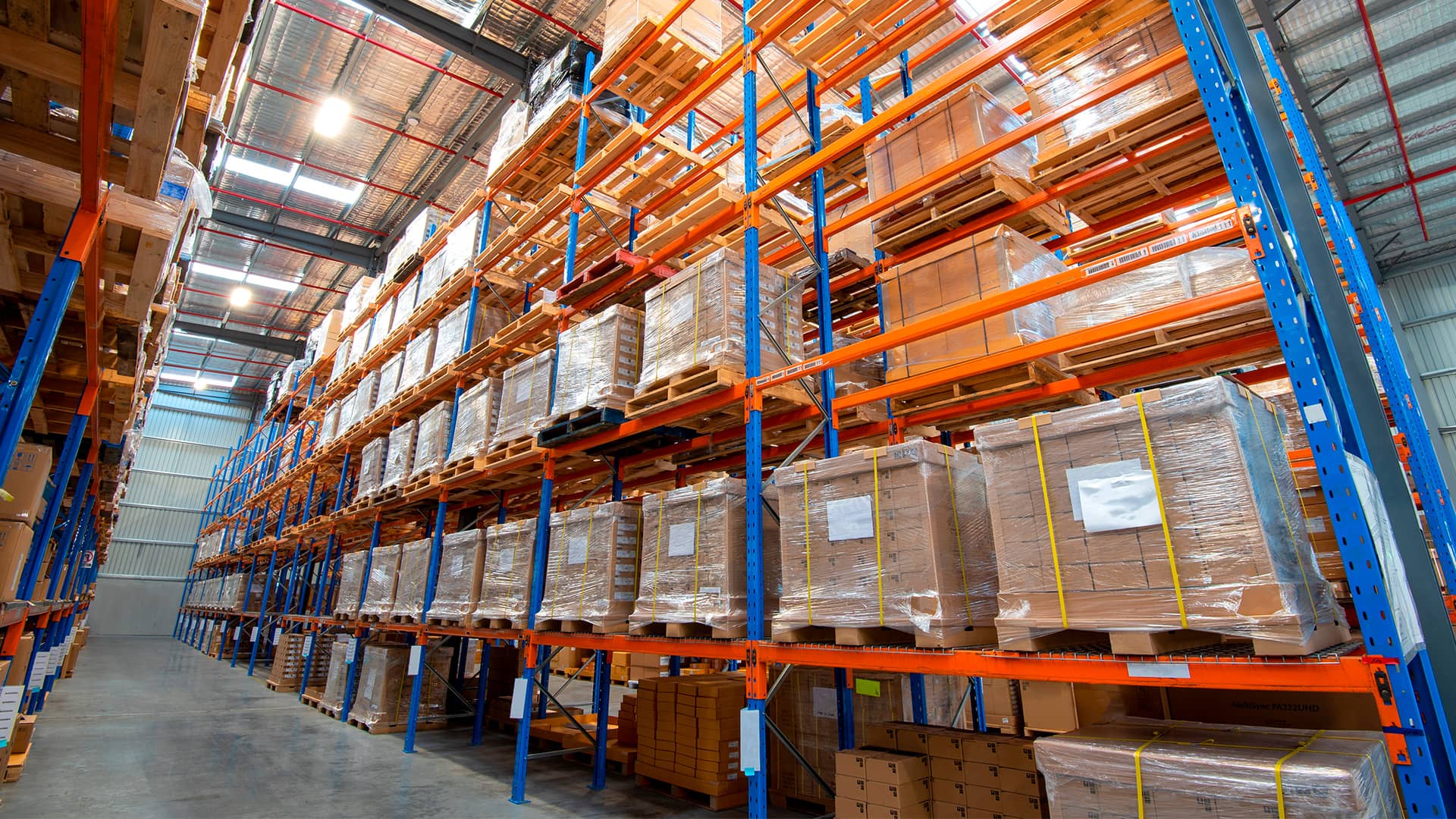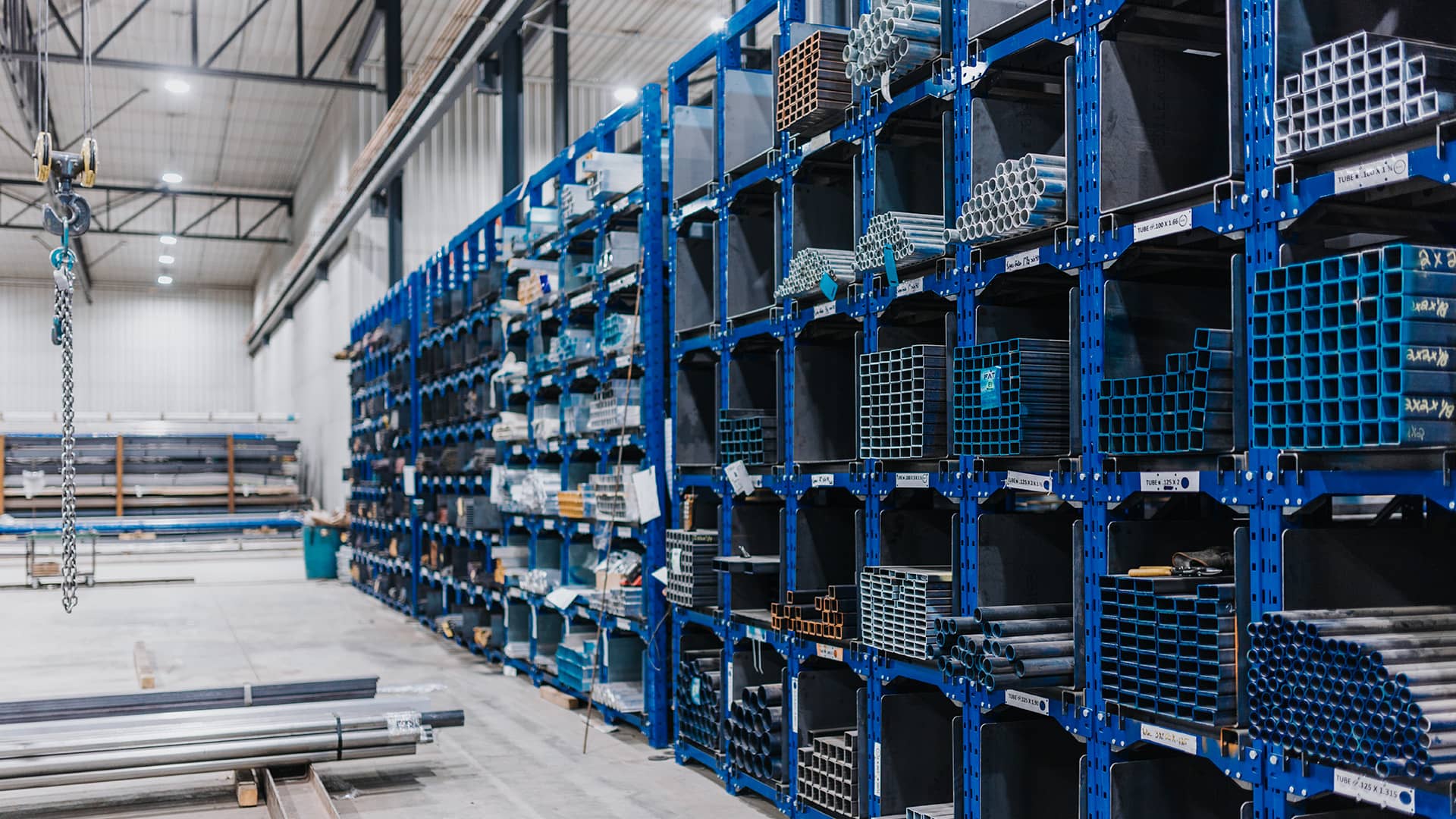21 November 2023
In the fast-paced world of industrial storage, efficiency is a priority. Warehouses are the heart of supply chain operations. They ensure products flow smoothly from factory to consumer. However, it becomes increasingly difficult to maintain warehouse efficiency as pallet racking occupancy approaches 85%.
In this article, we’ll explore why warehouse efficiency tends to drop at this point. We will also discuss strategies to reduce the negative effect of high occupancy rates.

Operational efficiency and the 85% Rule
Warehouse managers often adhere to the “85% rule” as a guideline to maintain operational efficiency. Several problems start to emerge when pallet storage racks reach an occupancy rate of 85% or more. These obstacles compromise warehouse operations and lead to decreased efficiency levels. Let us take a look at the underlying causes behind this phenomenon.
Limited Access
When pallet racking is too dense, forklifts and warehouse staff find it harder to access and retrieve items. The increased travel time between items can lead to order fulfillment delays and lower productivity.
Increased Congestion
Higher occupancy rates leads to narrower aisles and less room for equipment and workers. Blockage can slow down warehouse operations and increase the risk of accidents. This in turn can lead to potential damage to stock and equipment.
Reduced Visibility
Dense storage makes it hard for staff to see and identify products quickly. This issue increases the likelihood of order picking errors, which can result in inventory gaps and customer frustration.
Safety Concerns
Operating in tightly packed aisles can be hazardous, with a higher likelihood of collisions and accidents. Safety becomes a more significant concern as occupancy rates increase. Densely packed storage systems can injure staff members. They can also damage equipment and products.
Inventory Accuracy
Keeping accurate inventory records and carrying out regular counts become more difficult in tightly packed warehouses. It can lead to poor inventory management and cause stock deviation. Stock excess and shortage are likely to occur, which can affect customer service and be costly for a business.
Decreased Flexibility
Storage needs can change due to seasonal variations or sudden inventory surges. A warehouse must be flexible to meet the demands of the market. However, high occupancy rates reduce the ability of a warehouse to adapt to change in storage needs.
Longer Handling Times
It takes more time to retrieve items from densely packed racks. This leads to longer order handling times and decreased order fulfillment speed. These delays can harm customer satisfaction and impact a company’s competitive edge.
Increased Maintenance
Operating at high occupancy rates can put more stress on the rack systems and equipment. Frequent maintenance and repair can increase operational costs and lead to downtime.
Storage plays a pivotal role in the evolving landscape of supply chain management. Which is why optimizing their efficiency is not just a luxury, but a necessity. When a warehouse reaches 85% occupancy rate, it can rapidly go from smooth operations to potential disruptions.
Recognizing the challenges at this stage is one of the steps. The real key lies in implementing strategies to mitigate the negative impacts and maintain warehouse efficiency. To maintain efficiency in a warehouse, it’s essential to strike a balance between storage capacity and operational efficiency. Keep reading to discover the strategies designed to address operational challenges.
Strategies to mitigate negative impacts
In order to maintain warehouse efficiency, consider the following strategies when occupancy rates approach 85%:
1. Optimize Storage Layout
Regularly review and optimize your warehouse layout to maximize space usage without compromising visibility and safety. A good warehouse layout can store material while ensuring easy circulation for employees and lift trucks.
2. Reconfigure Racks
Consider rearranging pallet racks to provide higher storage density. Using vertical space is an effective way to create new and improve storage space while maintaining visibility and safety. Investing in different types of racking can help you anticipate and respond to changing business needs.
3. Implement Inventory Management
Invest in robust warehouse technologies to increase productivity. Inventory management systems can help your business maintain accurate records and reduce inventory error.
4. Utilize Warehouse Management Systems (WMS)
Implement WMS to track inventory in real time, manage order fulfillment, and optimize warehouse operations. WMS can improve efficiency and accuracy, no matter the types of products you are storing.
5. Streamline Operations
Evaluate and streamline warehouse processes to reduce unnecessary handling and improve overall efficiency. While this process can seem like an important undertaking at first, they can greatly reduce labor costs in the long term.
6. Invest in Technology
Consider investing in automation and high quality technology solutions, such as conveyor systems and robotics. These technologies help to enhance warehouse operations and reduce reliance on manual labor.
In the world of warehousing, maintaining operational efficiency is crucial for meeting customer demands and staying competitive. The 85% rule is a valuable guideline to understand the challenges that arise as occupancy rates increase. It helps warehouse managers strike a balance between storage capacity and operational efficiency.
By implementing the strategies mentioned above, warehouses can continue to function at peak efficiency, ensuring smooth operations and customer satisfaction. At Roll Out Racks, we have made it our mission to help businesses use their warehouse space in an optimal manner. Contact one of our specialists today to optimize your warehouse racking system and stay ahead of the industry.
Latest news
19 July 2023
Unlocking Efficiency & Productivity With Warehouse Racking
In today's fast-paced business landscape, companies face the critical challenge of optimizing their storage and logistics operations. The right storag[...]
30 May 2023
PVC Pipe Storage and Racking Solutions for the Plastic Industry
As a manufacturer or distributor in the plastic industry, you most likely understand the challenges of storing PVC pip[...]
25 April 2023
How warehouse storage management can optimize your workforce
A warehouse, factory or distribution center has many elements that ensure successful business operations. Each of thes[...]


